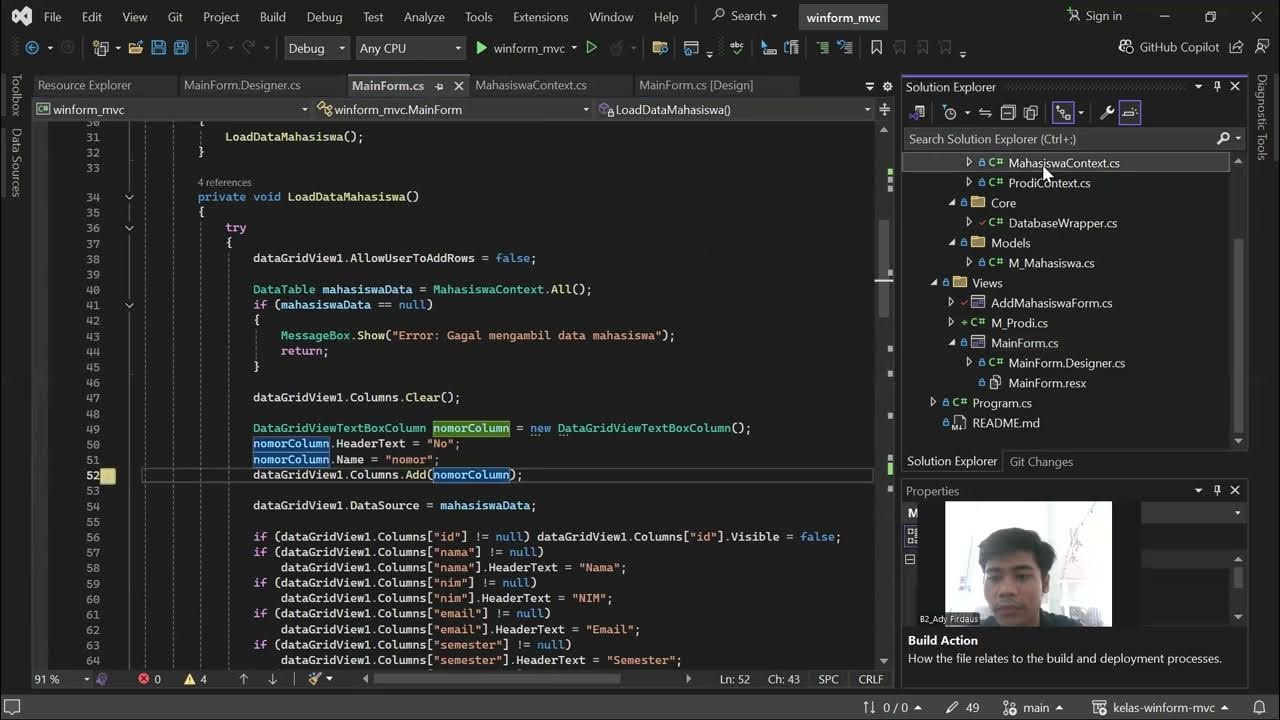190 INSERT and add Data Travel Tracker Part 2
Summary
TLDRIn this lesson, the focus is on enhancing a travel tracker application by learning how to use the INSERT command in PostgreSQL. The tutorial covers inserting data into a table, such as adding Italy's rice and wheat production into a 'world food' table. It also introduces creating a new 'countries' table and importing CSV data. The practical application involves handling user inputs in a Node.js backend to dynamically add countries to the tracker, utilizing SQL queries, and mapping countries to their respective codes. The goal is to track and display visited countries in a user-friendly app.
Takeaways
- 😀 Learn how to use the 'INSERT INTO' command in PostgreSQL to add data to a table.
- 😀 Understand the structure of SQL commands, including specifying the table, columns, and values to insert.
- 😀 Use placeholders and dynamic queries in Node.js to insert user-input data into a database.
- 😀 Create a 'countries' table with country codes and names, and import data from a CSV file.
- 😀 Insert data about Italy’s rice and wheat production into the 'world food' table as a practical example.
- 😀 Use PG Admin and SQL to manage and insert new rows into a PostgreSQL table.
- 😀 Learn the importance of using placeholders ($1, $2, etc.) for dynamic insertion in Node.js backend queries.
- 😀 Use Node.js and PostgreSQL together to implement a travel tracker application that records user visits.
- 😀 Implement logic in the Node.js backend to capture user input, query the database, and insert corresponding data.
- 😀 After data insertion, implement redirects and update the UI to show the countries the user has visited.
Q & A
What is the focus of this lesson in the travel tracker application?
-The lesson focuses on learning how to use the INSERT command in PostgreSQL to add new data into a table, specifically adding data for Italy's rice and wheat production into the 'world_food' table.
Why does the instructor mention that Italy is a significant producer of sushi rice in Europe?
-Italy is mentioned because it produces most of the sushi rice consumed in Europe, which is a surprising fact, as many people might not know that rice production in Italy is substantial, especially for a dish like sushi.
What is the correct format for inserting data into a PostgreSQL table?
-The correct format is 'INSERT INTO <table_name> (<column_names>) VALUES (<values>)', where the values are inserted in the same order as the columns, and string values are enclosed in single quotes.
What key SQL concept was emphasized in the lesson for inserting data programmatically?
-The lesson emphasizes the use of placeholders for dynamic data insertion, where placeholders like '$1', '$2', etc., are used in SQL queries, and corresponding values are passed through an array.
What kind of data is being inserted into the 'world_food' table in this exercise?
-The data being inserted includes the country name (Italy), its rice production in million tons (1.46), and its wheat production (7.3 million tons).
What steps are involved in creating a new table for storing country information?
-The steps involve creating a new table called 'countries', defining columns like ID (serial primary key), country code (CHAR(2)), and country name (VARCHAR(100)), and then importing data from a CSV file containing country information.
What challenge does the instructor highlight when inserting country data in the backend?
-The challenge is to programmatically insert data, such as a country name, into the database, where the backend must match the country name to the corresponding country code before inserting it into a visited countries table.
How does the application handle user input for adding countries to the travel tracker?
-The application captures user input from a form, checks the country name against the 'countries' table to find the corresponding country code, and then inserts that country code into the 'visited_countries' table.
How does the use of the 'db.query' function with placeholders improve SQL data insertion?
-Using 'db.query' with placeholders allows for dynamic data insertion. It enables inserting variables, constants, or expressions directly into SQL queries, making the queries more flexible and secure by avoiding SQL injection risks.
What is the purpose of the countries CSV file in this lesson?
-The countries CSV file contains country codes and names, and it's used to import the data into the 'countries' table, allowing the application to dynamically reference country codes when users add countries to their travel tracker.
Outlines

هذا القسم متوفر فقط للمشتركين. يرجى الترقية للوصول إلى هذه الميزة.
قم بالترقية الآنMindmap

هذا القسم متوفر فقط للمشتركين. يرجى الترقية للوصول إلى هذه الميزة.
قم بالترقية الآنKeywords

هذا القسم متوفر فقط للمشتركين. يرجى الترقية للوصول إلى هذه الميزة.
قم بالترقية الآنHighlights

هذا القسم متوفر فقط للمشتركين. يرجى الترقية للوصول إلى هذه الميزة.
قم بالترقية الآنTranscripts

هذا القسم متوفر فقط للمشتركين. يرجى الترقية للوصول إلى هذه الميزة.
قم بالترقية الآنتصفح المزيد من مقاطع الفيديو ذات الصلة
5.0 / 5 (0 votes)






